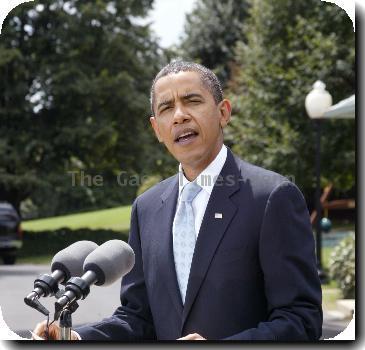Indian PM Singh says US and India to sign memo to boost cooperation on climate change
By Foster Klug, APMonday, November 23, 2009
Indian PM says US, India to sign climate memo
WASHINGTON — Indian Prime Minister Manmohan Singh said Monday that Indian and U.S. officials will sign a memorandum intended to improve cooperation on energy security, clean energy and climate change.
“This will provide a framework for pursuing bilateral cooperation in specific areas,” Singh said.
Speaking on the eve of an elaborate welcome at the White House planned by President Barack Obama, the prime minister did not provide details of the memorandum he said will be signed on Tuesday. He will use the White House visit to ease differences on global warming with the United States ahead of an international conference next month.
India has watched with wariness as Obama’s administration has lavished attention on rivals Pakistan and China. Now, Obama is trying to ease Indian worries by honoring Singh with the first state visit of his presidency.
The United States sees India as crucial to the U.S.-led fight against extremists in Pakistan and Afghanistan, as a counterweight to China and as key to efforts to settle world trade and climate change deals.
Developing and industrialized countries have bickered as they prepare to negotiate a new global climate change treaty, at a December summit in Copenhagen, meant to replace the 1997 Kyoto Protocol on carbon dioxide emissions.
Developing countries argue that rich countries produced most of the heat-trapping greenhouse gases on their march to development and should therefore bear the costs of fixing the problem. Wealthy nations say all countries — including growing polluters India and China — have to agree to broad cuts in emissions.
Singh has said that the world’s poor nations will not sacrifice their development in negotiations for a new climate change deal.
Despite the positive tone of his comments at the U.S. Chamber of Commerce on Monday, Singh’s visit comes at a delicate time. Indians are bristling over a perception that Obama neglected India during his recent trip to Asia and seemed to endorse a stronger role for China in India’s sensitive dealings with Pakistan.
The tension has disturbed a wave of goodwill between the countries orchestrated during the administration of President George W. Bush, who oversaw the transformation of the relationship after decades of Cold War-era distrust. The new ties are symbolized by a landmark civilian nuclear cooperation accord signed into law last year after years of close communication among senior Indian and U.S. officials who negotiated and then sold the accord to lawmakers.
Obama and Singh are now consumed with steering their countries through tough economic times and with winning domestic political battles. That means less time spent nurturing a relationship that blossomed under Bush.
Indian elite classes are nervous about Obama, according to Teresita Schaffer, a former State Department South Asia specialist and U.S. ambassador to Sri Lanka.
“There’s a certain amount of Bush nostalgia,” she said. While Bush was seen as having an emotional connection to the country, she said, Obama’s connection is seen as cerebral and as being eroded by domestic problems and by the focus on Afghanistan and Pakistan.
Because of the uncertainty, the leaders will be keen to show each other during Singh’s visit that the partnership is still in good shape.
The United States is especially interested in India’s ability to help turn the tide against violent extremism in South Asia. U.S. officials are pushing Pakistan to focus its military attention on extremists along the border with Afghanistan, not on India, its neighbor and bitter rival.
Singh said Monday that leaving Afghanistan before it is stable would embolden extremists in South Asia and around the world.
The prime minister also urged American companies to invest in India. As rich countries’ economic growth slows, he said, India’s huge class of skilled workers and massive potential consumer market will fuel strong growth in coming years.
Singh’s U.S. trip follows Obama’s meeting with Chinese President Hu Jintao in Beijing, a visit many in India watched closely.
Indian-Chinese trade is strong, but the countries have long disagreed over a disputed border and went to war in 1962. Both sides regularly cross the long, unmarked boundary in orchestrated efforts to show sovereignty.
Some Indians are nervous about the U.S. reliance on China to tackle global crises.
A joint statement by Obama and Hu that mentioned sensitive India-Pakistan ties has caused heartburn in India. Some saw this as a hint that Obama wants Beijing more involved in South Asian diplomacy. The Indian Foreign Ministry shot down the idea of a “third country” role in India-Pakistan affairs.
C. Raja Mohan, a leading Indian strategic analyst, said that encouraging a stronger role for China in South Asia is like “welcoming the fox into the chicken coop.”
Tags: Afghanistan, Asia, Barack Obama, Beijing, Central Asia, China, Climate, Climate Change, East Asia, Global Environmental Issues, Greater China, Hu Jintao, India, International Agreements, Manmohan Singh, North America, Pakistan, South Asia, Treaties, United States, Washington

